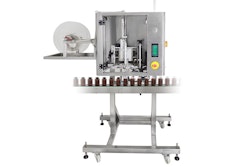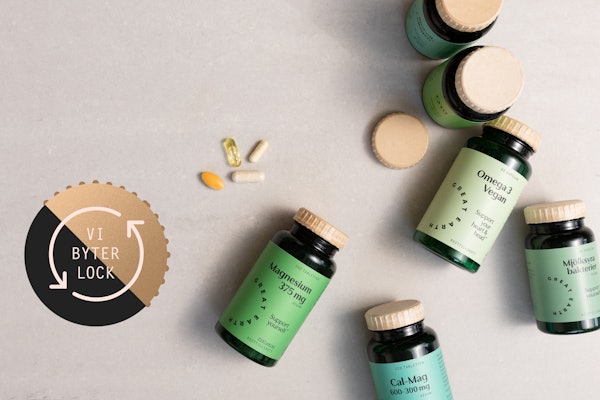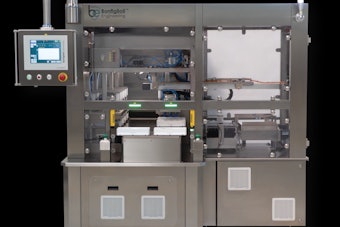In November 2016, Continuus Pharmaceuticals was awarded a $4.4 million contract by the U.S. Food and Drug Administration (FDA). The partnership revolves around a pilot project that will result in a science and risk-based approach to monitoring drug quality in an integrated continuous manufacturing (CM) model. Now, in the second year of this three-year project, Continuus has built an active end-to-end lab at its facility in Woburn, MA, and continues to work closely with the FDA in an effort to help the pharmaceutical industry break the batch processing mold.
Batch, which is based on a series of stop-and-start steps and quality checks across different unit operations, has been the methodology of choice for more than 50 years. But it is costly and inefficient, and can easily introduce errors. For these reasons, the pharmaceutical industry (both chemical and biotechnology) has been working to develop CM processes, where material is moved through an assembly line of fully integrated components. The critical element, however, is how to maintain quality throughout the line so that the process meets good manufacturing practices (GMPs). Once figured out, CM promises higher quality, shorter production times and more flexible testing and control.

The FDA supports the industry’s overall efforts. In 2015, the agency granted Vertex Pharmaceuticals approval of its cystic fibrosis drug called Orkambi, which was produced on a continuous processing line. Janssen’s HIV treatment, Prezista, is also being made now using continuous processes—in part, this is a result of the company’s work with the FDA’s Emerging Technology Team (ETT), which assists companies that are implementing CM technology for new and existing drugs.
Meanwhile, Eli Lilly invested $40 million in a CM facility in Ireland that is to serve as Lilly’s global center of excellence for CM focusing on its active pharmaceutical ingredients. Pfizer and GlaxoSmithKline (GSK) have also teamed up on CM, and Novartis is now leveraging technology developed with the Massachusetts Institute of Technology (MIT) as part of a 10-year collaboration called the Novartis-MIT Center for Continuous Manufacturing (CCM). In fact, Continuus Pharmaceuticals is the commercial spin-off of the Novartis-MIT CCM research, and is licensing the technology and working with strategic partners on its integrated continuous manufacturing (ICM) technology.
“What we have is unique,” said Salvatore Mascia, Founder and CEO of Continuus Pharmaceuticals. That’s why the FDA is supporting a pilot process. “They are interested in how we monitor [active pharmaceutical ingredients] in the line to gain an understanding of how you control the system and product quality, with the hope that this can guide future regulatory guidelines.”
The FDA has issued guidance frameworks around various aspects of the transition to CM, the most recent being “Advancement of Emerging Technology Applications for Pharmaceutical Innovation and Modernization,” released in September. The guidance documents don’t establish legally enforceable responsibilities, but rather recommendations that will ease the regulatory review, compliance and inspection policies.
The FDA is building an understanding of how to regulate a continuous process. “This is an opportunity for the agency to understand how you control a line and to make sure there is product quality throughout a fully integrated end-to-end system,” Mascia says.
While the CM technology—for the industry in general—is working just fine in a laboratory environment, there is a need for more equipment that can scale for commercial use.

“Technically speaking, it is possible to put together a continuous process from an engineering perspective. But if the elements of quality by design (QbD) are not built in, you may have a challenge getting it approved,” said Naveen Pathak, Head of QbD Systems at Shire, during a presentation at the Commercializing Continuous Processing in Pharma Summit in Boston earlier this year. “It will be a nice engineering project, but it won’t see the light of day.”
That is where technology suppliers can help. Working with engineering firm New England Controls, the Continuus ICM system uses Emerson’s DeltaV for control and automation of all of its processes. In addition, Emerson’s Syncade software is the manufacturing execution system (MES) providing instructions to the operators so that necessary actions are completed correctly and at the right time. “We collaborate to build the modeling and control aspect of it,” Mascia says.
Continuous control
Most manufacturers are still in the early stages of confirming that the CM process works for the individual compound or cell or protein they are trying to produce. That’s due to the complexity of the system setup.
“When it comes to continuous manufacturing, there’s a lot of instrumentation and measurements that need to go on. And, in continuous, you don’t get the downtime that you’d have in batch,” says Bob Lenich, Life Sciences Business Director at Emerson Automation Solutions. For example, analytical measurements that are typically done offline will have to be done in-line or at-line to make adjustments in real time. “You have to make sure devices and controllers are working correctly, so asset management becomes more important in continuous manufacturing than it was on the batch side.”
A new version of DeltaV embeds advanced control apps to make it easier to bring in information from different sources and do closed-loop control in one self-contained piece of equipment. Emerson is investing in more analytical technologies and reference models for the validation process because there are regulatory requirements around historical data.
The company is also investing in ways to easily swap out skids for adding or changing a step in the process, which in life sciences is known as ballroom management. “Systems don’t typically like when you unplug something and plug in something else, so we are investing in a way to put things together easily,” Lenich says.
The plug-and-play strategy plays into a project underway at the BioPhorum Operations Group (BPOG), a global community of biopharmaceutical leaders that is looking to define typical types of measurements and standardize interfaces that will enable equipment suppliers to plug in automation in a common way.
Industry observers agree that some standardization is needed for CM to work. “A process control strategy should work in a plug-and-play fashion with the manufacturing control strategy to deliver a product that is safe and effective,” Pathak notes.
But integration can be difficult. “The challenge is getting the equipment manufacturers and the automation suppliers to make sure they have standards so that, regardless of how they are built, they will work together,” Lenich says.
According to the BPOG, the industry needs to collaborate to accelerate the rate of progress. To that end, in July, the group released the Biomanufacturing Technology Roadmap, which highlights some of the market trends that are putting pressure on the biopharmaceutical industry to change—specifically, diversifying into new geographies and innovative therapies; the arrival of new product classes, such as non-monoclonal antibody (mAb) products, gene therapy and cell therapy; globally distributed markets that are adding uncertainty to existing clinical, regulatory and demand risks; and cost pressures brought on by the arrival of biosimilars and access to developing markets.
As a result, changes in business drivers and performance are required, and that includes a transformation in manufacturing reliability to improve quality and reduce waste. It also requires a significant reduction in the cost to manufacture. It means manufacturers need the ability to respond to variability in demand by reducing production changeover time. They also need to speed up new facility build times to scale globally.
To accomplish all of this, BPOG identified six areas of enabling technologies and capabilities:
-
New separation and media technologies coupled with advanced automation and process control.
-
A fully automated plug-and-play facility for faster response to capacity demands with minimal staff and time to changeover.
-
Modular and mobile manufacturing systems that are quick to configure, assemble, scale and relocate.
-
Enhanced in-line monitoring and real-time release for process control and product quality.
-
Integrated knowledge management of product and process technology across the development, manufacturing and commercial value streams.
-
Supply partnership management that encourages openness and trust to drive successful collaboration.
“A key part of this is building a more modular automation approach, while connecting everything together,” says Emerson’s Lenich, noting that the FDA will require a chain of evidence showing that every piece of information that flowed through the system is consistent.
The FDA won’t go away
Vertex built its CM line from the ground up. During the planning and deployment of the production line, the control strategy was a critical part of the plan, says Stephanie Krogmeier, Senior Director of Global Regulatory Chemistry, Manufacturing and Controls (CMC) Strategy at Vertex. Speaking at the Commercializing Continuous Processing in Pharma Summit earlier this year, Krogmeier said they paid close attention to the use of process analytical technology (PAT) for in-process control (IPC) and real-time release testing (RTRT). But just as important was a sharp focus on the FDA and the European Medicines Agency (EMA) criteria, she said.

The main questions from the health authorities pertained to the control strategy, the process variation and PAT methods—and inspectors are well informed and prepared. This is when senior management and a trained team of knowledgeable engineers and subject matter experts who are ready to interact with regulatory officials make a difference in the approval process. “If we did not spend the last 10 years aligning with the EMA and FDA, this would have been a lot harder,” Krogmeier said, referring to the regulatory approval process.
Continuus Pharmaceuticals’ Mascia agrees that engaging with the FDA and the industry is the best way to succeed in the move to CM. To that end, he sits on the board of the International Symposium on Continuous Manufacturing of Pharmaceuticals, which is working to create an industry alliance that includes the FDA.
It’s important that all of the company stakeholders are involved in the process because there is an investment required, Mascia says. “They may be worried because they have assets in place, which is why it requires a top-down approach and having the management aligned with the long-term view,” he says.
It is a long and tedious process. But, given the industry momentum and the FDA pressure, CM is quickly becoming a required move for all pharmaceutical companies. “The worst thing they can do right now is to not do anything and stay behind,” Mascia says.


























